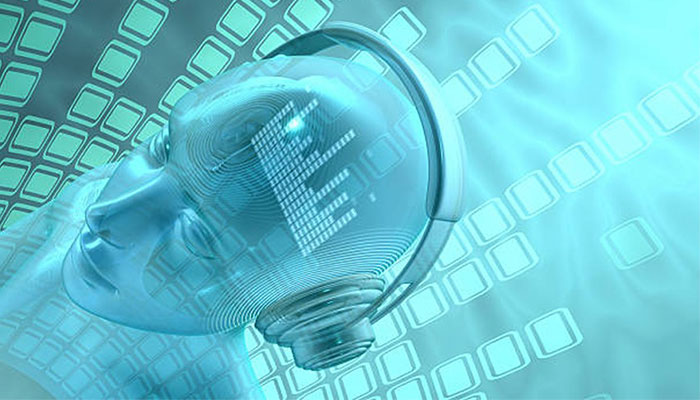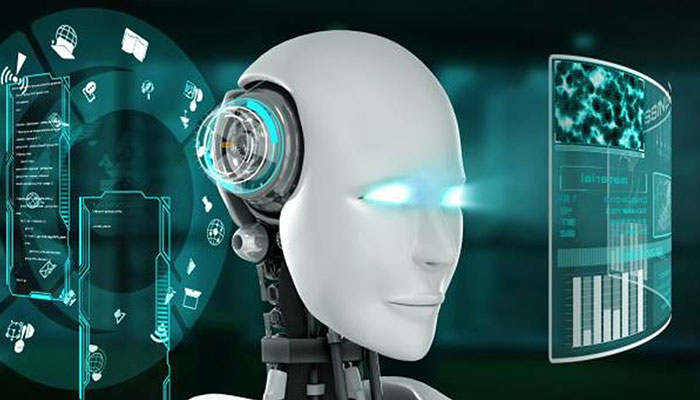Prof. Manish Shrivastava explains how Retrieval Augmented Generation (RAG) optimises output of large language models and improves the quality of their responses.
Large Language Models (LLMs) have emerged as powerful tools for processing and generating human-like text. These models, such as GPT-3, BERT, and their successors, have revolutionised natural language processing tasks including text generation, translation, and question-answering. Their ability to understand context and generate coherent responses has made them invaluable in numerous applications across industries.
However, when it comes to precise information extraction, especially at an enterprise scale, LLMs face certain limitations. One of the most significant issues is their tendency to “hallucinate” or generate plausible sounding but factually incorrect information. This occurs because LLMs are trained to predict the most likely next word in a sequence, rather than to retrieve and present factual information. While this approach works well for general language tasks, it can lead to inaccuracies when precise, up-to-date information is required. This is where Retrieval Augmented Generation (RAG) comes into play, offering a solution that combines the strengths of LLMs with the accuracy of retrieval-based systems.
Retrieval Augmented Generation
Retrieval Augmented Generation addresses the limitations of traditional LLMs by combining them with information retrieval systems. RAG models work by first retrieving relevant information from a knowledge base and then using this information to guide the language model’s generation process. This approach significantly reduces the likelihood of hallucinations and ensures that the generated content is grounded in factual, retrievable information. It also allows RAG systems to leverage the vast knowledge and language understanding capabilities of LLMs while maintaining a high degree of accuracy and reliability in the information presented.
Impact on Enterprise-Scale Information Extraction
The combination of Large Language Models (LLMs) and Retrieval Augmented Generation (RAG) is poised to revolutionise information extraction processes at the enterprise level. Traditional methods often struggled with context-dependent nuances and semantic complexities inherent in human language. When LLMs are coupled with RAG’s ability to ground responses in verified information from curated knowledge bases, they result in highly trustworthy results. This enhanced accuracy translates directly to more reliable decision-making processes.
Customizability is yet another dimension where LLM-RAG systems shine in the enterprise context. Every organisation has its unique lexicon, domain-specific knowledge, and particular areas of focus. By curating a knowledge base that reflects an organisation’s proprietary information, enterprises can ensure that the information extraction process is highly relevant to their specific context.
Transparency and explainability, often cited as concerns with AI systems, are significantly enhanced in LLM-RAG implementations. Unlike pure LLM systems, which can sometimes be opaque in their decision-making processes, RAG systems can provide clear references to the sources used in generating responses. This traceability is invaluable in enterprise settings for accountability and auditability.
Moreover, the impact of LLM-RAG systems extends beyond mere information extraction – it has the potential to transform how knowledge is disseminated and utilised within an organisation. By providing easy access to accurate, context-aware information, these systems can democratise knowledge across the enterprise. Employees at all levels can leverage these tools to quickly find relevant information, answer complex queries, and gain insights that were previously siloed or difficult to access.
RAG Offerings in the Market
The landscape of Retrieval Augmented Generation (RAG) solutions is rapidly evolving. The market is characterised by a mix of established tech giants, specialised AI companies, and open-source projects, each bringing their unique strengths to the table. Elastic, a company primarily known for its Elasticsearch search engine, has recognized the potential of RAG and integrated these capabilities into its offerings. Their approach cleverly leverages the powerful search and analytics capabilities of Elasticsearch, combining them with machine learning models to create a robust RAG solution. This integration allows for efficient retrieval of relevant information from large datasets, which can then be used to augment language model responses. Elastic’s solution is particularly well-suited for enterprises that already utilise Elasticsearch for their data storage and retrieval needs, providing a seamless path to implementing RAG within their existing infrastructure.

Amazon’s Kendra, while not explicitly marketed as a RAG solution, is an intelligent search service that can serve as a crucial component in a RAG implementation. Kendra uses machine learning to enhance search results and can be seamlessly integrated with other AWS services to create comprehensive RAG systems. This makes it a particularly attractive option for enterprises looking to improve information retrieval from their internal documents, websites, and databases while leveraging their existing AWS infrastructure.
Similarly, Microsoft’s Azure Cognitive Search can be utilised as the retrieval component in a RAG system. It offers AI-powered search capabilities that can be combined with Azure’s machine learning services to create end-to-end RAG solutions. Microsoft has been actively working on integrating RAG-like capabilities into its broader suite of AI services, enhancing their accuracy and relevance across various applications.
As the field of RAG continues to evolve, we’re seeing an increasing focus on the underlying data structures that power these systems. Two key approaches have emerged as dominant in the market: vector databases and knowledge graphs. Each of these technologies offers distinct advantages and limitations, shaping the way RAG systems are implemented and influencing their performance in different use cases.
Vector Databases in RAG Applications
Vector databases have become a popular choice for many teams implementing RAG systems, primarily due to their ease of setup and the speed of retrieval they offer. These specialised databases are designed to store, index, and query vector embeddings – numerical representations of unstructured data such as text, images, and audio. The process of using a vector database in a RAG system typically involves several steps. First, the raw data is ingested and pre-processed, which includes cleaning the data and segmenting it into manageable chunks. These chunks are then converted into vector embeddings using an embedding model, which captures the semantic meaning and context of the data. These embeddings are stored and indexed in the vector database. When a query is made, it is processed through the same embedding model, and the resulting query vector is matched against the stored embeddings to find similar vectors. The retrieved data is then combined with the original query and passed to a large language model to generate a contextual and holistic answer.
However, vector databases do have limitations. They lack the ability to represent hierarchical or relational structures found in traditional databases, which can be limiting for use cases that require organised data relationships. Additionally, search results are often limited to the top several matches to avoid overwhelming amounts of data, which can hinder effectiveness in cases where more comprehensive data retrieval is necessary.
Knowledge Graphs in RAG Applications
While vector databases have been the go-to solution for many RAG implementations, knowledge graphs are gaining traction, particularly in enterprise AI spaces where understanding complex data relationships is critical for better accuracy. Knowledge graphs offer a structured way to organise data, representing entities as nodes and relationships as edges within a graph.
Implementing a knowledge graph differs significantly from vector database approach. First, data is extracted from various sources and processed to identify entities, relationships, and metadata. This information is then used to build the knowledge graph, creating nodes for entities, edges for relationships, and tagging all elements with associated metadata. When a query is made, the system identifies relevant entities and relationships within the query and constructs a graph query to retrieve the pertinent information. The retrieved data is then used to augment the context provided to the language model, enabling it to generate a more comprehensive and accurate response.

Advantages of Knowledge Graphs
The use of knowledge graphs in RAG systems offers several advantages. They can significantly improve retrieval accuracy by accounting for relationships between data points, leading to more contextually relevant responses. Knowledge graphs also provide transparency and data lineage by adding metadata to nodes and edges, making it easier to trace the origin and evolution of data. This enhanced explainability can be crucial in building trust in AI systems, especially in sensitive domains like healthcare or finance. However, just like vector databases, knowledge graphs also come with their own set of challenges. The setup and maintenance of knowledge graphs can be complex and resource-intensive, requiring significant effort in data modelling and ontology design. They also tend to be slower at retrieving data compared to vector databases, as they need to traverse the graph to answer queries. Additionally, handling data updates in a knowledge graph can be challenging, potentially leading to inconsistencies and errors if not managed carefully.
Choosing the Right Approach for Your RAG Application
The choice between vector databases, knowledge graphs, or a hybrid approach for your RAG application ultimately depends on your specific use case and the nature of your data. Vector databases are often the best choice for getting started, offering ease of implementation and good performance for many applications. They’re particularly well-suited for handling large volumes of unstructured data and performing semantic search.
Knowledge graphs, on the other hand, shine in scenarios that require a deep understanding of relationships and hierarchies within data. They’re particularly valuable for recommendation systems, applications that need to recognize and utilise data hierarchies, and scenarios where explainability and clear data lineage are crucial.
Hybrid approaches can be beneficial when dealing with large, diverse datasets or when queries are complex and multifaceted, requiring both contextual understanding and detailed relationship mapping. However, the added power of hybrid systems comes at the cost of increased complexity and maintenance requirements.
As the field of RAG continues to evolve, we’re likely to see further innovations in how these technologies are implemented and combined. The recent introduction of Microsoft’s GraphRAG, for instance, highlights the growing importance of knowledge graphs in complex AI applications. As organisations continue to explore and refine these approaches, we can expect to see increasingly sophisticated RAG systems that can handle more complex queries and provide more accurate, contextual responses.
Conclusions
Large Language Models and Retrieval Augmented Generation represent a significant advancement in the field of natural language processing and information extraction. By addressing the limitations of traditional LLMs, RAG systems offer a powerful solution for enterprises requiring precise and reliable information extraction at scale. As the technology continues to evolve and more RAG offerings become available, we can expect to see increasingly sophisticated applications of this approach across various industries. The combination of vast language understanding capabilities with accurate information retrieval promises to unlock new possibilities in how we interact with and extract value from large-scale data repositories.
This article was initially published in the August edition of TechForward Dispatch

Prof. Manish Shrivastava is a professor at the Language Technologies Research Centre (LTRC). His research interests include machine translation and natural language processing for Indian languages. He is also the co-founder of Subtl.ai, a document retrieval platform that leverages GenAI to optimise information discovery on the internet.


Next post